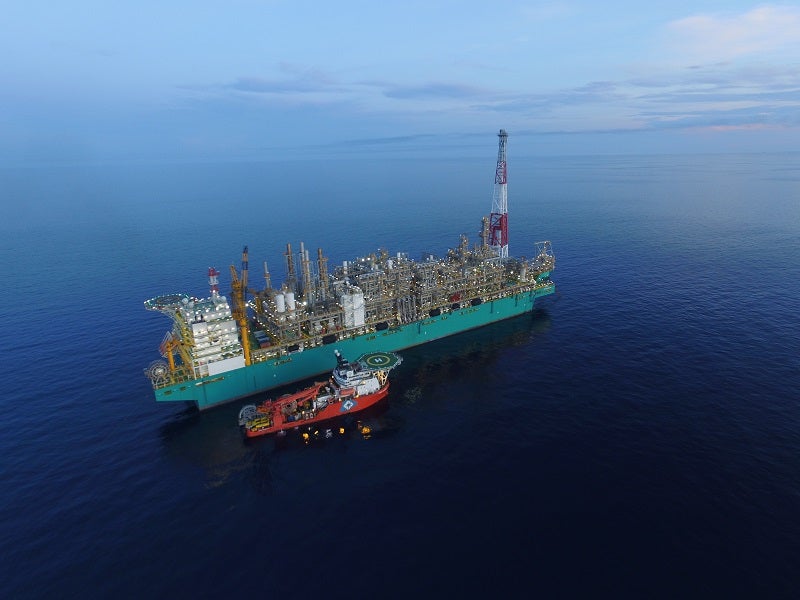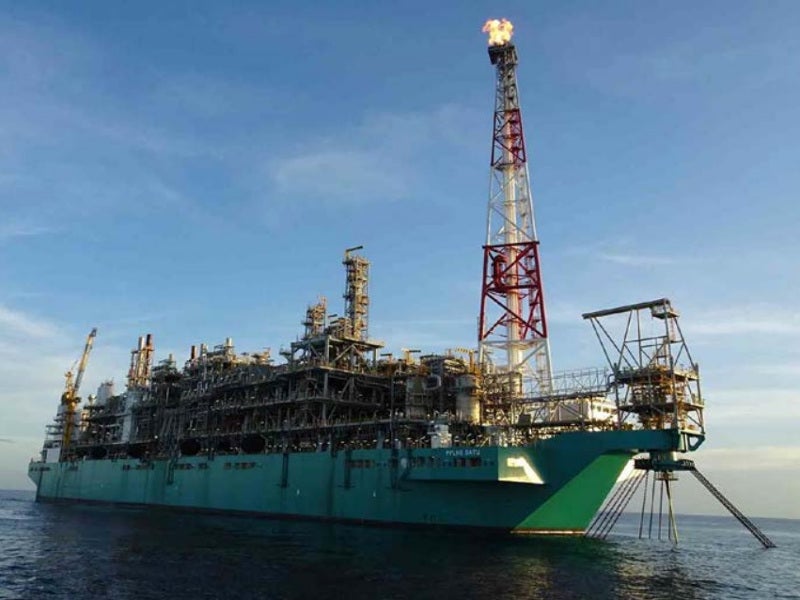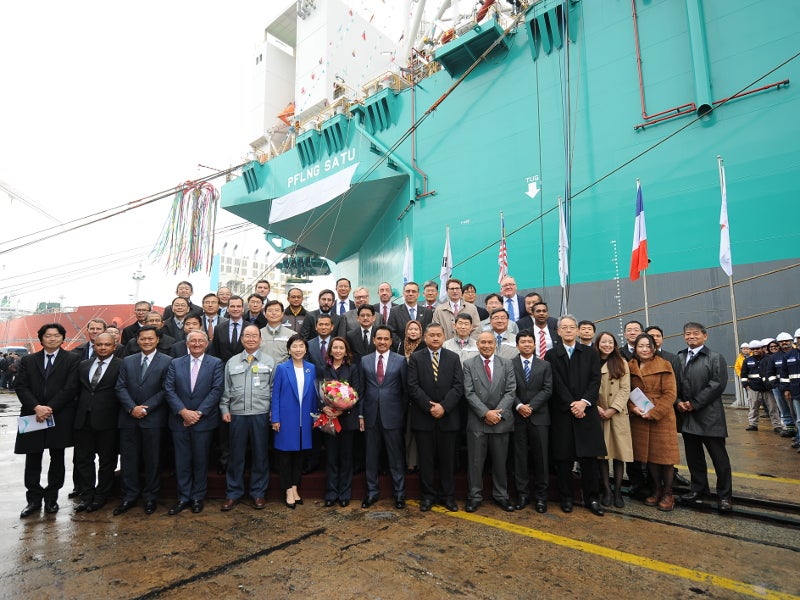Petroliam Nasional Berhad’s (Petronas) first floating liquefied natural gas (PFLNG 1) facility, also known as PFLNG SATU, was developed for the Kanowit gas field off the coast of Sarawak in Malaysia.
The front-end engineering and design (FEED) of the facility was undertaken by Technip Daewoo Consortium (TDC), a joint venture (JV) between Technip and Daewoo Shipbuilding & Marine Engineering (DSME). TDC received the FEED contract from Petronas Floating LNG 1 (Labuan), a subsidiary of PETRONAS, in December 2010 and is also responsible for the construction of the facility.
PFLNG SATU was constructed at Daewoo’s shipyard in Okpo, South Korea. The floating LNG facility was towed to its location, 180km offshore of Bintulu, in 2016. It has a processing capacity of 1.2 million tonnes of LNG a year.
PFLNG 1 operations
PFLNG 1 started production from the Kanowit gas field in December 2016 and loaded its first cargo in April 2017.
The FLNG facility was relocated to Kebabangan field, offshore Sabah, Malaysia in March 2019. Kebabangan field is operated by Kebabangan Petroleum Operating Company.
Construction of PFLNG SATU
Petronas Floating LNG 1 (Labuan) signed an engineering, procurement, construction, installation and commissioning contract for PFLNG 1 with TDC in June 2012. Construction of the facility started a year later, with the first steel cut in June 2013. The keel was laid in January 2014 and the official launching ceremony was held in April 2014, while construction was completed in March 2016.
PFLNG SATU is the second FLNG development in the world after the Prelude FLNG, which was developed by Shell. The Prelude FLNG started production in December 2018.
PFLNG SATU design and features
PFLNG SATU is of the Det Norske Veritas (DNV) class and includes the floating structure, mooring arrangement and natural gas liquefaction technology. It is 365m-long and approximately 60m-wide, and weighs approximately 125,000t when fully-loaded.
PFLNG SATU is the first FLNG project to use the dual row cargo containment system, which enables the cryogenic storage tanks to be tolerant to sloshing within the hull.
The FLNG facility also facilitates the development of small and remote offshore fields in Malaysia, which have not been explored because of the high costs required to develop and evacuate the gas reserves.
Contractors involved in PFLNG 1 development
Technip executed the detailed design of the topsides at its operating centres in Kuala Lumpur, Malaysia, and Paris, France. It provided its technical expertise in natural gas liquefaction, providing offshore floating facilities and subsea infrastructures to the FLNG project.
Air Products signed an equipment and process license agreement for the project’s use of Air Products’ AP-NTM LNG process and equipment. The parts of the proprietary equipment were built at different plants and assembled into modules for the PFLNG 1.
The coil wound heat exchangers and compressor-expanders were built in Wilkes-Barre and Fogelsville plants in Pennsylvania, US, respectively. The economiser cold boxes were built in Tanjung Langsat, Malaysia.
Suppliers for PFLNG 1 project
Honeywell’s wholly-owned subsidiary UOP provided its UOP Amine Guard FS process to remove carbon dioxide and hydrogen sulphide from the LNG feed streams.
GE Oil & Gas supplied gas turbine-driven compressor train technology, comprising four PGT25+G4 gas turbine generator systems, two PGT25+G4 gas turbine-driven compressor units and two electric motor driven centrifugal compressors modules, all of which are used to cool the natural gas in the FLNG.
PETRONAS Floating LNG awarded a subcontract to PBJV Group, a subsidiary of Barakah Offshore for FLNG offshore works, in February 2016. The PFLNG 1 unit was classified by DNV GL.
Mampaey Offshore Industries provided double quick release mooring hooks for mooring of the unit, while SOFEC was contracted for the engineering, supply and delivery of mooring system to relocate the PFLNG 1.






